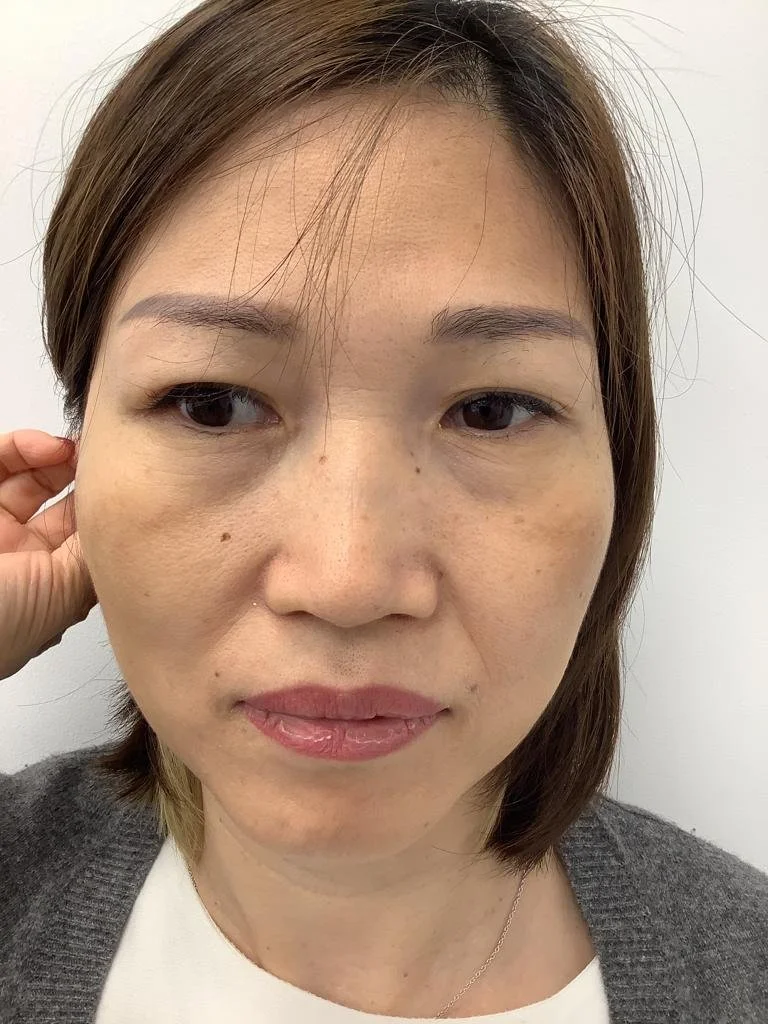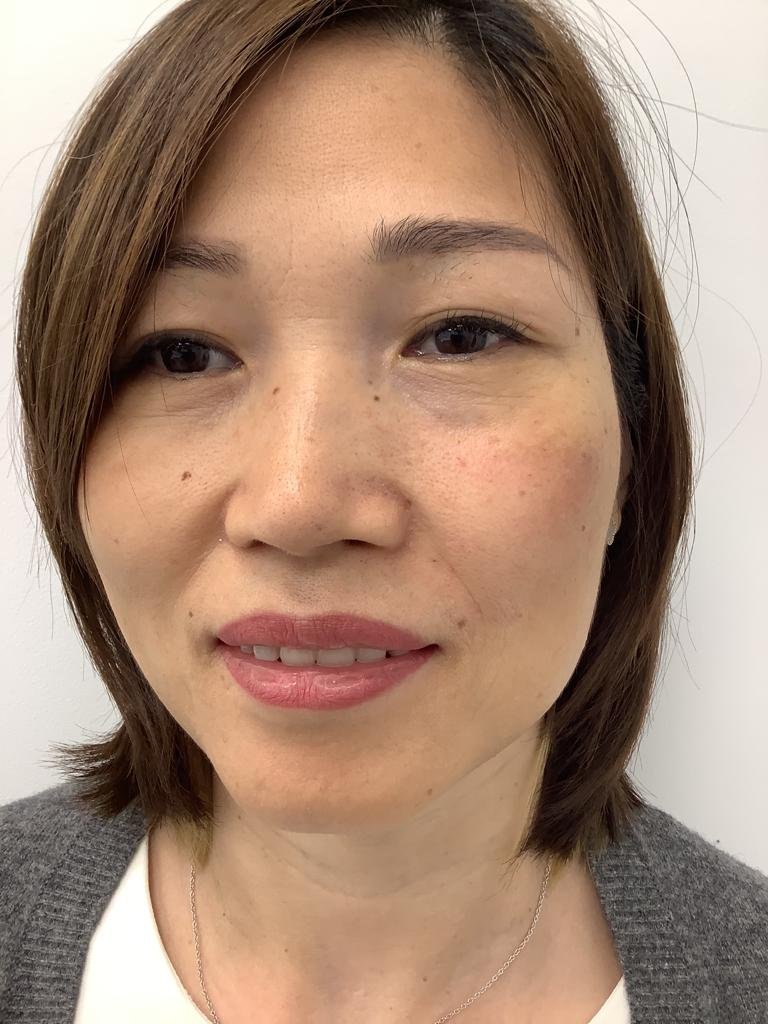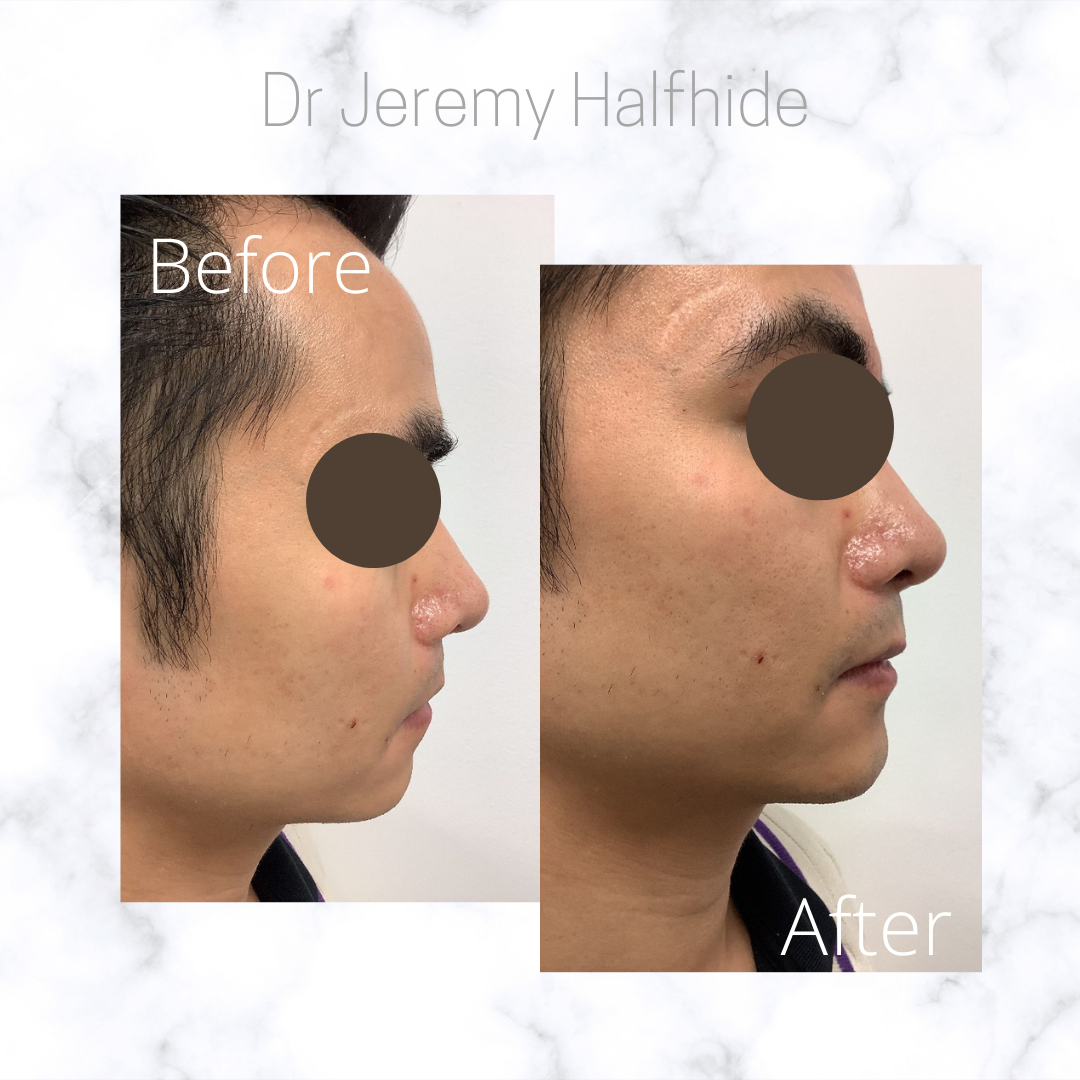Anti-Ageing Injectables
Overview
Dr Halfhide has 25 years experience in Botox and Filler treatments, used for full face rejuvenation. Most commonly used for wrinkles in the forehead, between the eyebrows (frown lines) and crow’s feet; additionally botox is helpful for bunny wrinkles of the nose, lipstick (sometimes called smoker’s) lines, marionette lines and down turned corners of mouth (‘twenty past four smile’), gummy smile, bobbly chin, and neck lines. Botox can also be used to treat headaches, grinding teeth/ jaw clenching, slimming of the cheeks, and excessive sweating.
Botulinum Toxin (Botox)
What is Botox?
Botulinum toxin is simply a protein, more usually known as Botox.
Isn’t it a poison?
The short answer is no. For any substance to be poisonous it has to be ingested in sufficient quantities to cause harm. The doses used in cosmetic treatment are incredibly small: if it was laid out on a glass table in front of you it is unlikely you could even see it!
Ingesting 10 times the botulinum toxin dose used in a cosmetic treatment would cause a person no harm whatsoever. By contrast ingesting 10 times your essential daily requirement of water would definitely harm you (fits, kidney failure, coma etc etc). Dose for dose one could argue that Botox is safer than water!
It’s Natural
Strictly and scientifically speaking, Botulinim toxin is natural: it is a protein produced by a bacterium Clostridium botulinum and has been in existence since the dawn of bacteria themselves. Quite unlike the majority of food additives (insecticides, fertilisers, preservatives, flavourings, colourings etc.) that we all consume daily in the food chain, Botulinum toxin is far more scientifically studied and much more thoroughly understood than those food additives; and in the decades of research and clinical practice it is proven to be very safe.
How can we be so sure of its safety?
Therapeutic use of botulinum toxin is not new, it has been used in medicine since the 1970’s. In fact there is hardly a medical discipline from Urology to Ophthalmology to Gastroenterology to Dermatology … that has not been using it for decades. In Neurology it has been used in cerebral palsy patients at doses much, much larger than cosmetic doses, since the 1980’s, with no long term ill-effects.
Dose for dose safer than water, long term safety data at much larger than used cosmetic doses … it is hard to think of a medicine in the entire British National Formulary of prescription medicines that is so effective whilst at the same time also being so safe!
Isn’t the Practitioner important too?
Very much so! Botulinum toxin side-effects are largely down to the individual in front of you who is holding the syringe and not the botulinum toxin itself, so choose your provider carefully.
People find it hard to believe that the use of botulinum toxin is poorly regulated in the UK; it is a prescription medicine and under prescribing legislation the prescriber has a professional duty to carry out a face to face consultation with a patient before prescribing. Sadly the enforcement of this legislation in the UK is weak, almost non-existent, meaning that many patients in the UK receive injections from people who have limited training (such as a one day course!) and have got hold of botulinum toxin from a prescriber who has not conducted a face to face consultation and is thus breaching the Statutory prescribing guidelines of Good Medical Practice. Would you want to have your face injected by someone who obtains botulinum toxin from a practitioner prepared to flout Statutory prescribing guidelines? And after a one day training course?
Dermal Fillers
Chin augmentation
Lip augmentation
Before
After
This patient requested particularly more upper lip volume
What are dermal fillers?
Dermal fillers are injected just below the skin surface, it is a simple lunch time procedure.
What are they used for?
They are mainly used for the correction of facial lines/ wrinkles, and enhancement or altering certain specific facial features such as the lips or chin.
Marionette lines (oral commissures)
Smile lines (nasolabial lines)
Jaw contouring
Cheek depressions
Lip enhancement
Chin augmentation
non-surgical rhinoplasty
Acne scars and traumatic facial scars (with subcision)
Sometimes they can also help frown lines (glabellar lines), smoker's lines (perioral lines) and crow's feet (periorbital lines)
Before and after pictures here
What does Dr Halfhide use?
Hyaluronan (Juvederm range, most often Voluma, Volux, Volbella, Volite; and Profhilo)
Poly-L-lactic acid (Sculptra)
Dr Halfhide’s fillers all incorporate local anaesthetic which immediately reduces discomfort
Hyaluronan (also known as Hyaluronic acid) is a natural glycosaminoglycan found in all animal species including humans. It is a jelly-like substance that fills the space between collagen and elastin fibres. It is the most effective shin hydrator available being many times more effective than any moisturiser and lasting up to 15 months or more (e.g. Voluma) – unlike a moisturiser which achieves much less and lasts for just minutes or hours.
Over time, through the ageing process, ultraviolet light exposure and to a lesser extent smoking and alcohol, the body's natural store of hyaluronic acid is degraded resulting in disorganised clumps of collagen and excessive elastin.
Hyaluronan is used not just in dermatology, but also in the medical disciplines of rheumatology, ophthalmology, and wound repair.
Am I suitable for Hyaluronan?
Almost all people are suitable. Because hyaluronan is chemically identical to human hyaluronan, allergy to it is very rare. This is why the previously used bovine and avian collagen is much less often used now. Patients required an initial skin test to confirm they were not allergic to it and then waited 4 weeks for treatment. Dr Halfhide has not used collagen since 2002 when the superior hyaluronan products became available (and not requiring a skin test and 4 week wait).
Prices from £450, detailed costs of treatment are provided at the time of consultation after the doctor has assessed your objectives and examined you.
Sculptra
Cheek augmentation


This product is not strictly speaking a filler rather it stimulates collagen production. It is less used now because of very occasional nodule formation (which occurs less often with hyaluronan). However, Dr Halfhide has a band of patients who have loved it over the last 20+ years and still insist on it! It also has an advantage over hyaluronan: as a collagen stimulator it is very useful for those patients with a lot of sun damage. These patients have lost much collagen and in its place the skin fills out with elastin fibres (medically referred to as Solar Elastosis), making the skin have a ‘crepe paper’ appearance. Since Sculptra is a collagen stimulator such patients do well from replacing the degraded and lost collagen.
What are the side effects?
Bruising, approximately 1:5 procedures but it is not expected to be any larger than a 5 pence piece and is easily covered with make up
Discomfort, though the needle is tiny ( the same size that diabetics use every day)
Rarer side effects
Lumps, nodules, overcorrection, though Dr Halfhide’s treatments are conservative and he is more likely to under-treat than over-treat
Unwanted migration of product
Very rare side effects
blue appearance from too superficial an injection
inflammatory reactions weeks to years after injection
Numbness due to nerve palsy
Vascular injury
Infections: reactivation of herpes virus, bacterial infection
extrusion of implant
Allergic reactions
Preventing of side effects
Choose your practitioner carefully. Patients often blame the product for unwanted effects when in fact it is rarely true that the product is at fault, more often it is the injector. The UK’s regulation of this market is weak, virtually non-existent: don’t become the victim of a poorly skilled practitioner who is unregulated! A doctor’s license to practice is regulated by the General Medical Council UK, Dr Halfhide has held full registration since 1989.
Proper knowledge of facial anatomy, adequate training and supervision are important, especially to avoid the rarer but serious side effects.
Caution is necessary in patients with a bleeding disorder or who are taking aspirin, warfarin, apixaban, ginseng, vitamin E or other anticoagulant agent. Please tell the doctor if you are taking blood thinners.
Prophylactic antivirals, such as oral aciclovir, should be prescribed if there is a history of herpes infection (cold sores).
Use small quantities of light filler in thin skinned areas, such as tear trough and eyelids; patients should be counselled and handled with caution in these areas.
Avoid injection into a blood vessel; the practitioner must have a good training and thorough understanding of the vascular danger areas, he / she should always aspirate prior to injection.
Prices from £450, detailed costs of treatment are provided at the time of consultation after the doctor has assessed your objectives and examined you.




